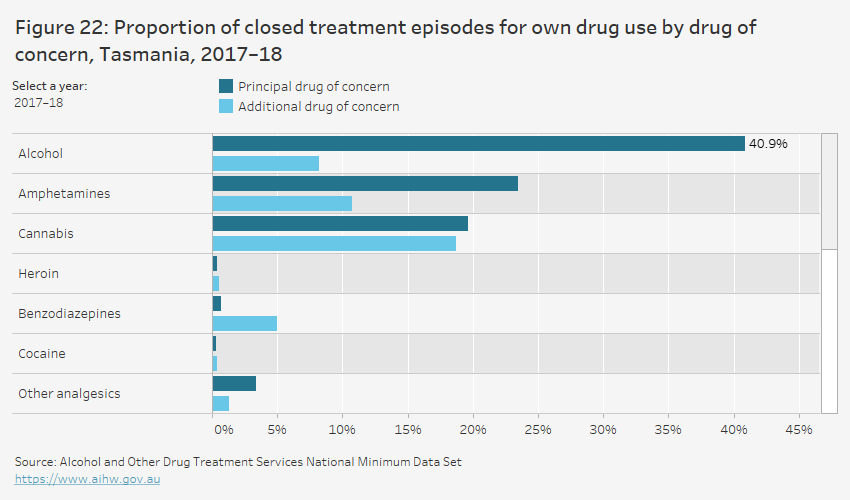Drugs of concern
In 2017–18, for clients receiving treatment episodes for their own drug use:
- alcohol was the most common principal drug of concern for clients in Tasmania (41% of episodes) (Figure 22; Table SE TAS.10).
- amphetamines as a principal drug of concern accounted for just under one-quarter of episodes (24%), followed by cannabis (20%), and morphine (3.8%).
Clients can nominate up to 5 additional drugs of concern, these drugs are not necessarily the subject of any treatment within the episode (see Technical notes).
When the client reported additional drugs of concern:
- cannabis was the most common additional drug of concern (19% of episodes), followed by amphetamines (11%), alcohol (8%), and nicotine (8%) (Table SE TAS.11).
Over the period 2013–14 to 2017–18:
- alcohol was the most common principal drug of concern for clients in Tasmania, falling from 41% to 37% in
2016–17, then increasing to 41% in 2017–18 (Table SE TAS.10) - amphetamines replaced cannabis as the second most common principal drug of concern in 2016–17, increasing from 11% to 24% over the period
- conversely, cannabis decreased from 30% to 20%
- the proportion of closed treatment episodes with morphine as a principal drug of concern has consistently been higher than the national rate, ranging from 3 times higher in 2014–15 to 9 times as higher in 2016–17 (Table SD.2).
Data visualisation - Figure 22: Proportion of closed treatment episodes for own drug use by drug of concern, Tasmania, 2017–18



